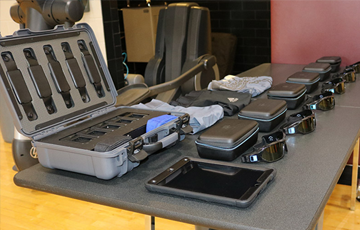

They want to know that you can credibly deliver on the proposal, and that you have a plan, but the nuts and bolts typically are much less interesting.Ī nonprofit funder absolutely wants to understand how the after-school homework tutoring program you’re proposing will interact with the community - how it will find underserved students, how the tutoring will be delivered to the students, what indicators will be used to measure success - but the behind the scenes tech stack like what task management and tutor booking software you’ll use is completely irrelevant unless it’s to justify that you’ll be able to deliver the program. Methods and technology matter much less to these funders.

They are generally much less willing to take a flyer on projects with only a modest chance of success, because failures won’t serve the community they want to see served. The funder has some particular change they want to see in the world some community they want to see better served. Special calls - like those that research computing projects typically fall under - and calls by nonprofit funders, are different. And methods can sabotage a project - a team that does great work with the wrong methods won’t get the best results. A new technology or method might be why it’s important to fund this work now - some key observation wasn’t possible before, but now it is, and the funder and team who makes the observation now will get the impact. There’s a lot of focus on methods and technology used, because those are relevant for assessing the best work. So everyone is focussed on “the best” work. The funder wants a portfolio of projects that are promising and could have impact - some will pan out and some won’t, but such is research. That means you don’t have to think about the distinction very much. Most of us in research got our experience in grants from open disciplinary competitions where the funders and fundees goals are aligned - be seen to be funding/doing the best research. Money attached to work that isn’t in the second set is at best a distraction, at worst drains your teams’ credibility. Excellent work that isn’t in that first set won’t get funding. (Or you can go straight to the roundup).Īny funder has things they want to accomplish, and the goal as a potential fundee is to find something in the intersection of “work that helps the funder accomplish their goals” and “work that we are able to do and that is aligned with our goals”. If you’re considering working in entertainment, then the augmented reality research project taking place at the Institute for Neurocognitive Science and Technology (INST) is where you can find our scientists, faculty, and students working with augmented reality-the technology of the future that could bring Hollywood blockbusters and gamers’ dreams to life.This week’s RCT Newsletter is a little slow going out the reason ties into something I’ve been meaning to write a bit more about, usual research funding grants vs nonprofit grants and what research computing and data teams can learn from that. It is here where researchers and their students are working with government and private industry to create innovative advances in the bio-medical, aerospace, environmental, oceanic, and atmospheric fields. For instance, the High Performance Computing Collaboratory (HPC2) is one of the top supercomputing centers in the world. Here students work in modern laboratories that provide state-of-the art equipment and practical experience to defend information infrastructures, as well as studying forensics to gather evidence for prosecution.ĬSE offers multiples areas of study and interests where students have opportunities to work with state-of-the-art computer software and hardware. The Center for Computer Security Research is one of only five university programs in computer forensics offered across the nation.
/cloudfront-us-east-1.images.arcpublishing.com/gray/JTQ6VXQSN5PHDA7B3NHTEVG5EY.jpg)
Sound farfetched? Well, that dream is attainable if you study and specialize in forensics.

Imagine working as an FBI agent investigating and solving computer security crimes instead of CSI: Miami, it is CSI: MSU.


 0 kommentar(er)
0 kommentar(er)
